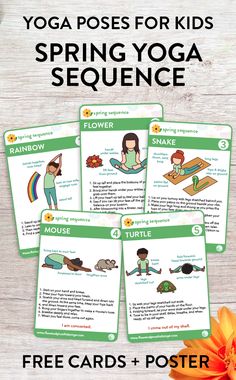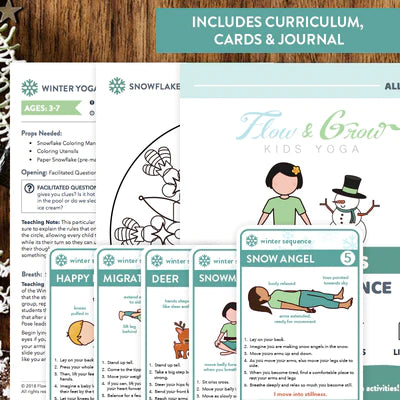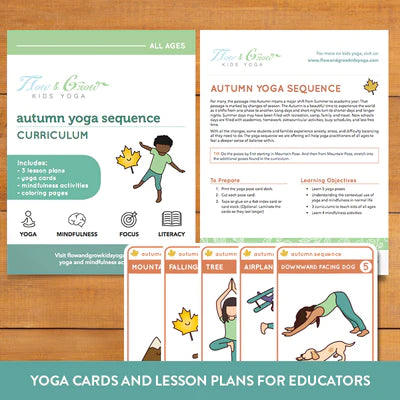Your Cart is Empty
22% off Automatically at checkout when you spend $5 of more!
22% off Automatically at checkout when you spend $5 of more!

How to Teach Mindful Eating to Your Kids and Why It's Important
by Lara Hocheiser June 04, 2021 5 min read
By Guest Blogger Nicole McCray (check out more of her work at her website, nicolemccray.com!)
In a perfect world, your children would prefer healthy food over processed, sugar-filled options. They would gravitate toward fresh vegetables and fruit, whole grains, and healthy proteins.
As a responsible parent, you want your children to have a healthy relationship with food and try new foods eagerly. So, what do you do? You define what’s healthy and what isn’t.
Then you make rules about what they’re allowed to eat. No candy, no dessert until you eat your dinner, eat everything on your plate….we’ve all heard them before, and there’s no question that you have your child’s best interest at heart.
But what if we told you there was a better way to help your child form a healthy relationship with food? Teaching your kids about mindful eating and why it’s important will encourage them to choose healthier food on their own. Practicing the mindful eating strategies below will set youand your children up for success!

Why Teaching Your Kids How to Eat Mindfully Is Important
Mindful eating is all about being more aware of what you’re eating. Not just the taste of the food, but also how it smells, the texture, and how the flavors combine. It’s about savoring the experience of eating, rather than eating out of habit.
Mindful eating can be extremely beneficial for kids because it encourages healthy relationships with food. It teaches them to feel satisfied without overeating, which helps to prevent unhealthy weight gain in the future. It also encourages them to make wiser choices about which foods will provide the nutrition they need for overall health and growth.
When to Start Teaching Kids About Mindful Eating
It’s important to accept that there’s no one right or wrong way to eat. There’s no end to the variety of ways to eat and food experiences available to your child.
Teaching your kids to eat mindfully can start when they’re just babies and toddlers. Although mindful eating might be a new concept to you, babies and toddlers are already pros. They have an acute awareness of their senses and already use them to explore the look, feel, taste, and smell their food before they begin eating.
Set the groundwork by introducing anorganic baby multivitamin and a variety of fruits and vegetables when they begin eating solid foods. As they grow into toddlers, begin offering a wider variety of foods and teach about how vitamins, minerals, and other nutrients nourish our bodies.
Of course, you must accept that their preferences will change often as they grow. Remember to focus on encouraging awareness, rather than setting hard and fast rules about what they must eat.

How to Teach Kids to Eat Mindfully
Here are some strategies you can incorporate into your children’s daily routine to encourage mindful eating.
-
Follow the S-S-S Model.
What is the S-S-S Model? It’s a mindful eating strategy that teaches kids to sit down during meals,eat more slowly, and savor what they’re eating. Kids tend to be easily distracted during meals, often grabbing a bite and then playing or looking at the TV while they chew and swallow. The S-S-S model encourages children to be aware of what their eating and breaks the habit of eating on autopilot.
2. Teach them to chew their food thoroughly.
Teach your kids to put their fork or spoon down in between each bite and chew every bite thoroughly. This strategy can prevent overeating because it encourages food-related satisfaction. It’s also better for digestion and nutrient absorption.
3. Encourage them to talk about what they’re eating.
When you sit down together for a meal, encourage your kids to talk about what they’re eating. Discuss the color, shape, and texture of their food. Ask them what it tastes and smells like. The more creative you are with your own observations, the more they will start to notice and observe their food.
This strategy not only helps reverse picky eating habits but also encourages them to be present while they eat. And remember there are no right or wrong answers. Teach them that it’s totally fine if they don’t like something. This will encourage them to try new things and think about what it is they do or don’t like about different foods.
Don’t forget to ask them how their bellies feel before and after a meal so they can begin to recognize what hungry and full feel like. This teaches them to avoid over and under-eating or eating for the wrong reasons, such as out of boredom.
4. Make healthy snacking convenient for your kids.
All of us are more likely to eat whatever’s easiest to grab. Placinghealthy, kid-friendly snacks in a highly visible, convenient location encourages healthier snacking. Try placing them at your child’s eye level in the pantry and fridge or in a bowl on the counter. Occasional treats are okay, but they shouldn’t be easy for your children to grab out of habit.
5. Offer snacks in portion size.
Whether it’s raisins or trail mix, when kids grab a snack, they generally eat two or three times the normal portion size. Even if the snack is a healthy one, all those extra calories add up and take away from their appetite at mealtime. Try offering their snacks pre-portioned in single-serving containers to help them learn about proper portion sizes. To reduce plastic waste that can be harmful for the environment, try using reusable snack-size containers.
6. Keep snacks and meals at the table.
Distracted eating is mindless eating, and kids eat in front of the television way too often. One of the best ways to encourage mindful eating is to keep meals and snacks at the table and set a no screens or toys rule. Be sure to set a good example by following the same rule yourself.
7. Take advantage of teaching opportunities.
Get your kids involved in planning meals and have them prepare their own lunches or review the school lunch menu with them each day. It’s the perfect opportunity to teach them about healthy eating strategies, such as which fats, carbs, and proteins are healthy and how to create balanced meals.
Helping your children compare food labels when you are grocery shopping is another perfect teachable moment. For example, pull two boxes of cereal off the shelf and have them help you choose the one with the fewest ingredients, least amount of sugar, and the most fiber. This encourages kids to be more aware and care about what’s in the food they’re eating.

Encourage Mindfulness in Other Areas of Life, Too
Mindful eating is just one part of leading a more mindful lifestyle that involves being more present and aware of your emotions, thoughts, and feelings.
You can teach your kids about mindfulness with practices like yoga, meditation, and breathing exercises. These practices can help them learn how to handle negative emotions, slow down, and focus.
Of course, these lessons will be beneficial for learning about mindful eating, but they can also benefit your children in many other areas of their life, too. You might just find that they handle difficult situations with more grace and calm, and even move through their days with more joy. Few things could be more meaningful, I think we can all agree!
Note from Lara Hocheiser, founder of Flow and Grow Kids Yoga on mindful eating:
Model eating while not distracted. Describe the tastes, smells, colors, and textures of your foods. Share nourishment and mindful immersion in the senses with the ones you love.

Leave a comment
Comments will be approved before showing up.
Also in Kids Yoga Blog

How Social and Emotional Learning and Yoga Help Kids Breathe Through Big Emotions
by Kane SEO April 21, 2025 4 min read

How Social and Emotional Learning and Yoga Help Kids Breathe Through Big Emotions
by Kane SEO April 14, 2025 4 min read
In classrooms and communities around the world, educators and parents alike are placing a growing emphasis onsocial and emotional learning. And for good reason: helping children understand, manage, and express their emotions in healthy ways is just as critical as teaching them to read or do math.

Power of Yoga for Kids: How It Helps Them Grow, Focus, and Thrive
by Kane SEO March 25, 2025 5 min read
In today’s fast-paced world, children are often exposed to stressors from a young age, whether it’s academic pressure, social challenges, or the overwhelming influence of digital devices. This can impact their physical, mental, and emotional well-being.
Ultimate Kids Year of Yoga Bundle
bundlespricey-contentdigital-resourcesearly-childhood-yoga-mindfulnesselementary-yoga-mindfulnesskids-yoga-resourcesmiddle-high-school-yoga-mindfulnessseasonal-yogayoga-cards
Ultimate Kids Year of Yoga Bundle
5 reviews
5.0 / 5.0
(5) 5 total reviews
$45.00
Ultimate Kids Year of Yoga Bundle
5 reviews
5.0 / 5.0
(5) 5 total reviews
$45.00
Kid’s Sun Salutation Yoga Cards
digital-resourcesearly-childhood-yoga-mindfulnesselementary-yoga-mindfulnesskids-yoga-resourcesliteracyunder-15yoga-cards
Kid’s Sun Salutation Yoga Cards
3 reviews
4.33 / 5.0
(3) 3 total reviews
$10.00
Kid’s Sun Salutation Yoga Cards
3 reviews
4.33 / 5.0
(3) 3 total reviews
$10.00
Yamas and Niyamas: Successful Relationships with Self & Others (tweens and teens)
pricey-contentdigital-resourceskids-yoga-resourceslesson-plansmiddle-high-school-yoga-mindfulnessmindfulness
Yamas and Niyamas: Successful Relationships with Self & Others (tweens and teens)
2 reviews
5.0 / 5.0
(2) 2 total reviews
$49.00$55.00
Yamas and Niyamas: Successful Relationships with Self & Others (tweens and teens)
2 reviews
5.0 / 5.0
(2) 2 total reviews
$49.00$55.00














